Submitter’s comments: Now this is nice! It has a beautiful horizontal navigation, which you can control by keyboard, too. Needless to say that it breaks my favorite hotkeys Alt-left and Alt-right to navigate backward and forward in my browser.
Just tried to click some post called “Rethink. Redefine. Redesign.” Would be a great idea. When you’re at the utmost left or right position, which you cannot tell as there’s no horizontal scrollbar visible, you automatically jump to the next/previous article. And as you can see at the upper right corner, you can also press the letter ‘s.’ No idea where that brings me, but at least it does something. You can even point with your mouse at the letter ‘s’ and my browser says that I can click on it. I do not dare, as no url shows up on my status bar, so I don’t know what happens.
Oh wait! The ‘s’ was the last letter of ‘Issues’. I just had to make my browser window a bit wider. Lucky me that I have a screen capable of 1280 pixels horizontally. But everybody has wide screens, nowadays, don’t they? (And lucky me I know how to turn off Javascript, which disables this crap and results in a normal, vertical page.)
Vincent Flanders’ comments: This site conveniently classifies itself as “experimental,” which disqualifies it from being a WPTS Daily Sucker — no matter how much the site sucks. And the site sucks much.
The site’s content consists of articles. Articles are composed of words. Words need to be presented in a linear fashion and that means top-to-bottom — not horizontally, which necessitates scrolling (or, in this case, clicking). The navigation goes batshit crazy on the feature pages. This is an information site and people expect to see content presented conventionally. Remember: it’s experimental; it sucks; and it isn’t the Daily Sucker.
There are a lot of contrast problems, as this screen capture by the Juicy Studio Contrast Analyzer demonstrates. Remember: it’s experimental; it sucks; and it isn’t the Daily Sucker.
I hate writing that looks like it came out of dack.com’s Web Economy Bullshit Generator. The modus operandi page of today’s not-the-Daily-Sucker has the following phrase:
We tried to think ahead and create a site that was a paradigm shift in interactivity and turn the traditional blog format on its head – or in this case, on its side.
Paradigm shift? Bullshit. If I want a paradigm shift, I’ll stand in front of the San Andreas Fault and wait for the big one. (Yes, I’ve used the phrase twice on WPTS, but it’s used sarcastically). Remember: it’s experimental; it sucks; and it isn’t the Daily Sucker.
Thinking for a Living



